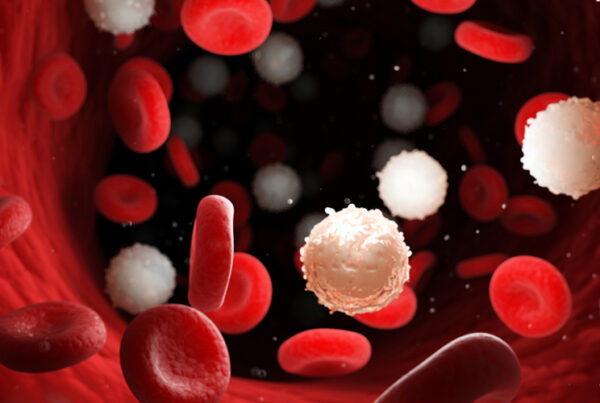
Blood disorders affect red blood cells, white blood cells, or platelets, leading to issues like anemia, immune deficiencies, or clotting problems. Among rare platelet disorders, Essential Thrombocythemia (ET) stands out. This chronic condition causes excessive platelet production due to genetic mutations, increasing the risk of abnormal clotting or bleeding. Unlike temporary platelet increases, ET persists and may lead to complications like strokes or excessive bleeding. While some individuals remain asymptomatic, early diagnosis and management are crucial to prevent severe outcomes.
What is Essential Thrombocythemia?
Essential Thrombocythemia (ET) is a rare blood disorder that affects platelet production in the bone marrow. Unlike normal conditions where the body produces just enough platelets to regulate clotting, essential thrombocythemia cancer causes an uncontrolled surge in platelet levels. This overproduction leads to an increased risk of blood clot formation, which can obstruct circulation and cause serious health complications, including stroke or heart attack.
How Essential Thrombocythemia Affects Platelet Production
The bone marrow, responsible for producing blood cells, functions like a well-organized factory. It balances the supply of red blood cells, white blood cells, and platelets to ensure the body’s circulatory system runs smoothly. However, in ET, abnormal stem cells in the bone marrow cause excessive platelet production. These platelets tend to be larger and irregularly shaped, making them more prone to forming unnecessary blood clots. At the same time, this excessive production can paradoxically lead to unusual bleeding because the body depletes its available platelets in the formation of unnecessary clots.
This imbalance makes treatment for essential thrombocythemia ET crucial to reducing platelet levels and preventing severe complications. While the condition is not curable, medical interventions can significantly lower the risks associated with excessive clotting or bleeding.
How Essential Thrombocythemia Differs from Other Blood Disorders
Many rare blood disorders affect blood cell function, but ET specifically targets platelets. Unlike anemia, which impacts red blood cells and oxygen delivery, or leukemia, which involves abnormal white blood cell production, essential thrombocythemia cancer directly affects the clotting process. While some blood disorders cause a shortage of platelets, ET leads to an overabundance, making it unique among chronic blood cancer conditions.
Patients often discover they have ET through routine blood tests, as the diagnosis typically involves detecting abnormally high platelet levels. While some individuals may not experience immediate symptoms, early detection and regular monitoring are essential for managing the condition and preventing complications.
By understanding what is essential thrombocythemia, individuals can take proactive steps in seeking the right treatment for essential thrombocythemia ET and reducing the risks associated with this chronic blood cancer.
Signs and Symptoms of Essential Thrombocythemia
Many people with essential thrombocythemia have no symptoms when they are diagnosed. The condition is often discovered during a routine blood test that shows a high platelet count. However, some individuals may experience the following:
Common Symptoms:
- Bleeding issues – Nosebleeds, gum bleeding, or easy bruising due to abnormal platelet function.
- Blood clots – Can lead to deep vein thrombosis (DVT) or pulmonary embolism.
- Fatigue – Feeling extremely tired or weak.
- Headaches – Frequent or severe headaches.
- Dizziness and fainting – Feeling lightheaded or losing consciousness.
- Nausea and vomiting – Unexplained stomach discomfort.
- Abdominal pain – Often caused by an enlarged spleen.
- Vision problems – Blurred or distorted vision.
- Numbness or tingling – Especially in the hands and feet.
If you experience any of these symptoms, it’s important to speak with a healthcare provider for proper evaluation and management.
What Causes Essential Thrombocythemia?
Essential thrombocythemia (ET) is a rare blood disorder caused by genetic mutations that develop over time. Unlike inherited conditions, this is an acquired genetic disorder, meaning you are not born with it. Instead, specific gene mutations in bone marrow stem cells lead to excessive platelet production, increasing the risk of blood clots and abnormal bleeding.
Key Genetic Mutations Linked to Essential Thrombocythemia
Several gene mutations contribute to essential thrombocythemia, with the most common being:
- JAK2 (Janus kinase 2): This gene helps control how stem cells produce blood cells. A mutation in JAK2 leads to uncontrolled platelet production.
- CALR (Calreticulin): The CALR gene provides instructions for producing the calreticulin protein. Researchers believe this protein plays a role in regulating gene activity, controlling cell growth and division, and determining when cells should die.
- MPL: An oncogene (a gene that can cause chronic blood cancer), MPL mutations push the bone marrow into producing too many platelets.
These genetic changes create a domino effect, pushing the bone marrow into overdrive and producing more platelets than the body needs. As a result, treatment for essential thrombocythemia ET focuses on managing platelet levels to prevent complications. Moreover, these gene mutations not only contribute to ET but are also associated with other myeloproliferative disorders, such as Idiopathic Myelofibrosis.
How Is Essential Thrombocythemia Diagnosed?
Most cases of ET are found during routine blood tests when a person’s platelet count is abnormally high. How ET is diagnosed typically involves:
- A complete blood count (CBC) to measure platelet levels.
- Genetic tests to identify mutations in JAK2, CALR, or MPL.
- A bone marrow biopsy to check for excessive platelet-producing cells.
Although this chronic blood cancer has no cure, early diagnosis and appropriate treatment can significantly reduce the risk of severe complications.
Treatment Options for Essential Thrombocythemia
While essential thrombocythemia (ET) is a chronic blood cancer, it can often be managed effectively with the right treatment plan. The goal of treatment for essential thrombocythemia ET is to lower platelet counts and reduce the risk of blood clots and bleeding complications. Treatment varies based on the patient’s age, overall health, and risk factors.
1. Medications for Essential Thrombocythemia
Doctors may prescribe medications to control platelet production and prevent complications. Common options include:
- Hydroxyurea – A chemotherapy drug that slows down platelet production in the bone marrow. It is commonly used for high-risk patients.
- Anagrelide – It reduces platelet counts without affecting other blood cells.
- Aspirin – Low-dose aspirin helps prevent blood clots by making platelets less sticky, reducing the risk of heart attack or stroke.
These medications play a crucial role in treating essential thrombocythemia (ET) by managing platelet levels and reducing the risk of complications.
2. Lifestyle Changes and Management Strategies – H3
Although ET is a rare blood disorder, lifestyle changes can help reduce risks and improve quality of life:
- Stay active – Regular exercise promotes healthy blood circulation and reduces the risk of blood clots.
- Maintain a heart-healthy diet – A balanced diet with fruits, vegetables, and lean proteins supports overall health.
- Avoid smoking and excessive alcohol – These can increase the risk of blood clots and other complications.
- Stay hydrated – Drinking enough water helps maintain good circulation and prevents thickened blood.
3. Monitoring and Follow-Up Care
Since ET is a chronic blood cancer, regular medical check-ups are essential to ensure treatment is working effectively.
- Routine blood tests – To track platelet counts and assess the effectiveness of treatment.
- Cardiovascular screening – To check for signs of clot-related complications.
Ongoing follow-up with a hematologist ensures that treatment for essential thrombocythemia ET remains effective and that any complications are addressed promptly.
Read More: What is Bone Marrow Edema?
Why are Clinical Trials Important?
Clinical trials play a vital role in advancing medical research by testing new treatments for safety and effectiveness. The importance of clinical trials lies in their ability to provide patients with innovative therapies while improving healthcare outcomes.
Currently, Myelofibrosis clinical trials are evaluating new treatment approaches to enhance disease management and improve patient care.
Conclusion:
Essential thrombocythemia is a rare chronic blood cancer that affects platelet production, increasing the risk of clotting and bleeding complications. Early diagnosis, proper management, and ongoing monitoring are crucial for maintaining health. Research continues to improve treatment options—Oncology Research is dedicated to advancing innovative therapies for better patient outcomes.
Frequently Asked Questions
Is essential thrombocythemia cancer?
Yes, essential thrombocythemia (ET) is a chronic blood cancer classified as a myeloproliferative neoplasm (MPN) that causes excessive platelet production.
How rare is essential thrombocythemia?
ET is a rare blood disorder, affecting about 1 to 2 in 100,000 people annually. It is more common in individuals over 50 but can occur at any age.
What are the symptoms of essential thrombocythemia?
Many people have no symptoms, but common ones include fatigue, headaches, dizziness, vision changes, tingling in hands or feet, and excessive bleeding or clotting.
What are the signs that ET is progressing?
Signs of progression include increasing platelet levels, more frequent blood clots or bleeding episodes, and an enlarged spleen.







